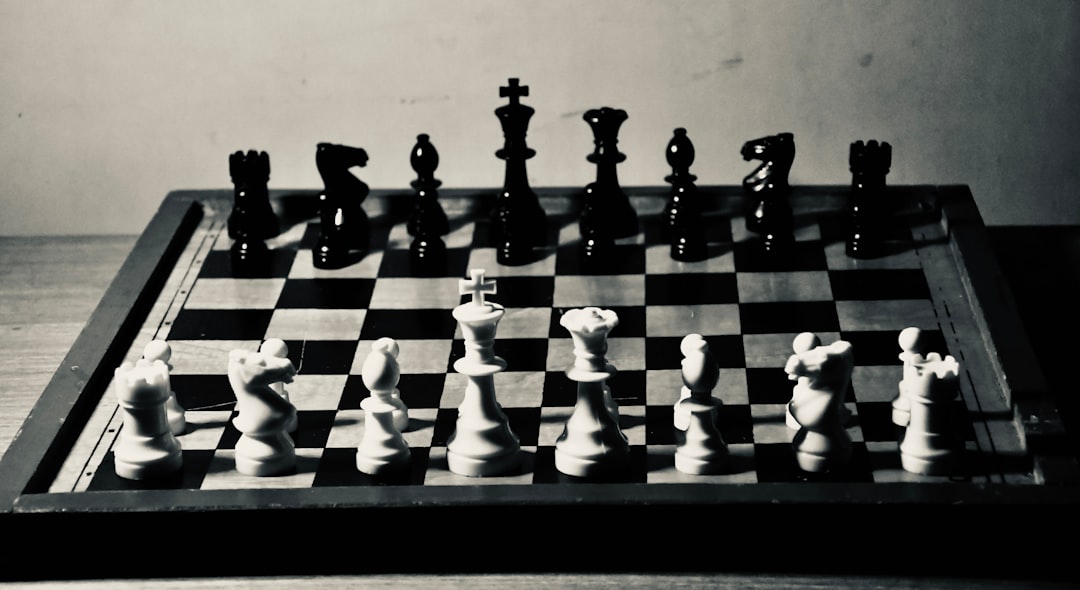The relationship between Iran and the United States has been fraught with tension and conflict since the mid-20th century. Initially, the two nations maintained a relatively cordial relationship, particularly during the reign of the Shah of Iran, Mohammad Reza Pahlavi, who was a close ally of the United States. However, this dynamic shifted dramatically following the 1979 Iranian Revolution, which resulted in the overthrow of the Shah and the establishment of an Islamic Republic under Ayatollah Khomeini.
The revolution marked a significant turning point, as it not only severed diplomatic ties but also led to the U.S.
This event solidified mutual distrust and animosity, laying the groundwork for decades of adversarial relations.
In the years that followed, U.S. policies towards Iran became increasingly hostile, characterized by economic sanctions and military posturing. The U.S.
viewed Iran as a destabilizing force in the Middle East, particularly due to its support for groups like Hezbollah and its nuclear ambitions. Conversely, Iran perceived U.S. actions as imperialistic and a direct threat to its sovereignty.
This cycle of suspicion and aggression has persisted, with both nations engaging in proxy conflicts across the region. The complexities of their relationship are further compounded by ideological differences, with Iran’s theocratic governance clashing with U.S. democratic values.
As a result, the historical backdrop of Iran-U.S. relations is marked by a series of confrontations that have shaped their interactions on the global stage.
Key Takeaways
- Iran-US relations have been strained for decades, with the 1979 Iranian Revolution and the subsequent hostage crisis being a major turning point.
- Recent events leading to escalating tensions include the US withdrawal from the Iran nuclear deal, the assassination of Iranian General Qasem Soleimani, and Iran’s retaliatory missile strikes on US bases in Iraq.
- Key players involved in the conflict include the US, Iran, Israel, Saudi Arabia, and other regional powers, as well as international organizations such as the UN and the EU.
- Potential consequences of escalation include further military conflict, destabilization of the region, and a potential nuclear arms race in the Middle East.
- The international response and involvement in the conflict have been mixed, with some countries calling for de-escalation and others supporting the US or Iran.
Recent Events Leading to Escalating Tensions
In recent years, several key events have contributed to a significant escalation in tensions between Iran and the United States. One pivotal moment was the U.S. withdrawal from the Joint Comprehensive Plan of Action (JCPOA) in 2018, an agreement aimed at curbing Iran’s nuclear program in exchange for sanctions relief.
The withdrawal not only undermined diplomatic efforts but also reinstated harsh economic sanctions that severely impacted Iran’s economy. In response, Iran began to gradually breach its commitments under the JCPOA, further straining relations and raising concerns about its nuclear capabilities.
Attacks on oil tankers and drone strikes attributed to Iranian forces have raised alarms in Washington and among its allies. The assassination of Iranian General Qassem Soleimani by a U.S. drone strike in January 2020 marked another critical juncture, prompting Iran to retaliate with missile strikes on U.S.
bases in Iraq. These events have created a volatile environment where miscalculations could lead to broader conflict, as both nations remain on high alert and ready to respond to perceived threats.
Key Players Involved

The dynamics of Iran-U.S. relations are influenced by various key players, each with their own interests and agendas. On the Iranian side, the leadership of Ayatollah Ali Khamenei and President Ebrahim Raisi plays a crucial role in shaping foreign policy.
Khamenei’s hardline stance against the U.S. reflects a broader ideological commitment to resisting Western influence in the region. Meanwhile, Raisi’s administration has sought to bolster Iran’s position through regional alliances and military capabilities, often emphasizing national sovereignty and resistance against perceived aggression.
On the U.S. side, the Biden administration has faced challenges in navigating this complex relationship. While there is an interest in reviving diplomatic talks regarding Iran’s nuclear program, there is also pressure from Congress and regional allies like Israel and Saudi Arabia to take a tougher stance against Iranian activities.
The interplay between these domestic and international pressures complicates decision-making processes and can lead to inconsistent policies that further exacerbate tensions.
Potential Consequences of Escalation
| Consequence | Description |
|---|---|
| Increased Tension | Escalation can lead to increased tension between parties involved, making it harder to find a peaceful resolution. |
| Loss of Lives | Escalation can result in loss of lives, especially in conflict situations, leading to human tragedy. |
| Destruction of Property | Escalation can lead to destruction of property, infrastructure, and resources, causing economic and social damage. |
| Displacement of People | Escalation can force people to flee their homes, leading to displacement and humanitarian crises. |
The potential consequences of escalating tensions between Iran and the United States are profound and far-reaching. A military confrontation could lead to significant loss of life and destabilization in an already volatile region. Such an escalation might not only involve direct conflict between U.S.
forces and Iranian military assets but could also draw in regional allies and adversaries, creating a broader conflict that could engulf neighboring countries like Iraq, Syria, and Saudi Arabia. Moreover, an escalation could have dire economic repercussions globally, particularly concerning oil prices. The Persian Gulf is a critical artery for global oil transportation; any disruption could lead to skyrocketing prices and economic instability worldwide.
Additionally, increased military spending by both nations could divert resources away from essential domestic needs, exacerbating social issues within their respective countries.
International Response and Involvement
The international community has closely monitored the escalating tensions between Iran and the United States, with various nations expressing concern over potential conflict. European allies have been particularly vocal about their desire to see diplomatic solutions prevail over military options. The European Union has attempted to mediate discussions aimed at reviving the JCPOA while advocating for a multilateral approach to address broader security concerns in the region.
Countries like Russia and China have also taken an interest in the situation, often positioning themselves as counterweights to U.S. influence in the Middle East. Both nations have expressed support for Iran’s right to pursue its nuclear program while criticizing U.S.
sanctions as counterproductive. This geopolitical landscape complicates efforts for de-escalation, as differing national interests can lead to conflicting strategies that hinder consensus-building.
Diplomatic Efforts to De-escalate

In light of rising tensions, various diplomatic efforts have been initiated to de-escalate the situation between Iran and the United States. Backchannel communications have been established through intermediaries such as Oman and Qatar, aiming to facilitate dialogue between both parties. These efforts underscore a recognition that direct confrontation would yield catastrophic consequences for all involved.
The Biden administration has signaled a willingness to return to negotiations regarding Iran’s nuclear program, contingent upon Tehran’s compliance with its JCPOA commitments. However, this approach faces significant hurdles due to mutual distrust and differing expectations from both sides. While Iran seeks relief from sanctions as part of any agreement, the U.S.
demands verifiable commitments regarding nuclear activities and regional behavior before considering any concessions.
Military Options and Considerations
As tensions escalate, military options remain a consideration for both Iran and the United States, albeit fraught with risks and uncertainties. For the U.S., military action could serve as a means of deterrence against Iranian provocations or as a response to attacks on American assets in the region. However, such actions could provoke retaliation from Iran, leading to a cycle of violence that spirals out of control.
Iran’s military strategy is heavily influenced by asymmetric warfare tactics, utilizing proxy groups throughout the region to extend its influence while minimizing direct confrontation with U.S. forces. This approach complicates any military response from Washington, as it must consider not only Iranian capabilities but also potential repercussions on regional stability and U.S.
interests abroad.
Economic Impact of Escalating Tensions
The economic ramifications of escalating tensions between Iran and the United States are significant and multifaceted. For Iran, renewed sanctions have already crippled its economy, leading to hyperinflation and widespread discontent among its populace. The prospect of further sanctions or military conflict could exacerbate these issues, pushing more Iranians into poverty and fueling social unrest.
On a global scale, disruptions in oil supply due to conflict in the Persian Gulf could lead to increased prices at gas pumps worldwide, affecting economies far beyond the immediate region. Countries reliant on oil imports would face inflationary pressures that could stifle economic growth and lead to political instability in various parts of the world.
Humanitarian Concerns
Amidst escalating tensions between Iran and the United States lies a pressing humanitarian concern that often gets overshadowed by geopolitical calculations. The Iranian population has borne the brunt of economic sanctions imposed by the U.S., leading to shortages of essential goods such as food and medicine. Humanitarian organizations have raised alarms about deteriorating living conditions for ordinary Iranians who are caught in the crossfire of international politics.
Furthermore, any military escalation would likely result in civilian casualties and displacement within Iran and potentially neighboring countries like Iraq or Afghanistan. The humanitarian impact of conflict extends beyond immediate violence; it can lead to long-term challenges such as refugee crises and increased vulnerability for marginalized populations.
Historical Context of Iran-US Conflict
Understanding the current state of Iran-U.S. relations requires a deep dive into their historical context, which is marked by cycles of cooperation and conflict over several decades. The 1953 CIA-backed coup that reinstated the Shah is often cited as a pivotal moment that sowed seeds of resentment among Iranians towards American interventionism in their affairs.
The subsequent Islamic Revolution in 1979 not only transformed Iran’s political landscape but also solidified anti-American sentiment among its leadership and populace alike. This historical backdrop continues to influence contemporary perceptions on both sides; for Iranians, it serves as a reminder of foreign interference, while for Americans, it reinforces narratives about Iranian hostility towards Western values.
Future Outlook and Possible Scenarios
Looking ahead, the future of Iran-U.S. relations remains uncertain, with several possible scenarios unfolding based on current trajectories. One potential outcome is a renewed diplomatic engagement that leads to a revised nuclear agreement or broader negotiations addressing regional security concerns.
Such an outcome would require significant concessions from both sides but could pave the way for improved relations over time. Conversely, if tensions continue to escalate without resolution, there is a real risk of military confrontation that could destabilize not only Iran but also neighboring countries and global markets. The interplay between domestic pressures within both nations—such as political opposition or public sentiment—will also play a crucial role in shaping future interactions.
Ultimately, navigating this complex relationship will require careful diplomacy, mutual understanding, and a commitment to addressing underlying grievances that have fueled decades of conflict between Iran and the United States.
The ongoing tensions between Iran and the United States have been a focal point of international relations, with both nations navigating a complex web of diplomatic, economic, and military challenges. A related article that delves into the intricacies of these tensions can be found on MyGeoQuest. This article provides a comprehensive overview of the historical context and recent developments that have shaped the current state of affairs between the two countries. For more detailed insights, you can read the full article by visiting this link.
WATCH NOW! Unlocking Disaster: 7 Choke Points That Could Fracture Our Connected World Overnight
FAQs
What are the current tensions between Iran and the US?
The current tensions between Iran and the US stem from a variety of issues, including Iran’s nuclear program, regional influence, and support for militant groups.
What is the Iran nuclear deal and why is it a source of tension?
The Iran nuclear deal, officially known as the Joint Comprehensive Plan of Action (JCPOA), was an agreement reached in 2015 between Iran and six world powers, including the US. The deal aimed to limit Iran’s nuclear program in exchange for lifting economic sanctions. However, in 2018, the US withdrew from the deal, leading to increased tensions between the two countries.
How has the US imposed sanctions on Iran?
The US has imposed a wide range of sanctions on Iran, targeting its economy, energy sector, and individuals and entities involved in its nuclear and missile programs. These sanctions have had a significant impact on Iran’s economy and have contributed to the ongoing tensions between the two countries.
What are the regional implications of the tensions between Iran and the US?
The tensions between Iran and the US have had significant regional implications, particularly in the Middle East. Iran’s support for militant groups and its involvement in conflicts in countries such as Syria, Iraq, and Yemen have contributed to a broader regional power struggle with the US and its allies.
How have recent events escalated tensions between Iran and the US?
Recent events, such as the US drone strike that killed Iranian General Qasem Soleimani in January 2020 and Iran’s subsequent missile attacks on US military bases in Iraq, have further escalated tensions between the two countries. These events have raised concerns about the potential for a wider conflict in the region.
